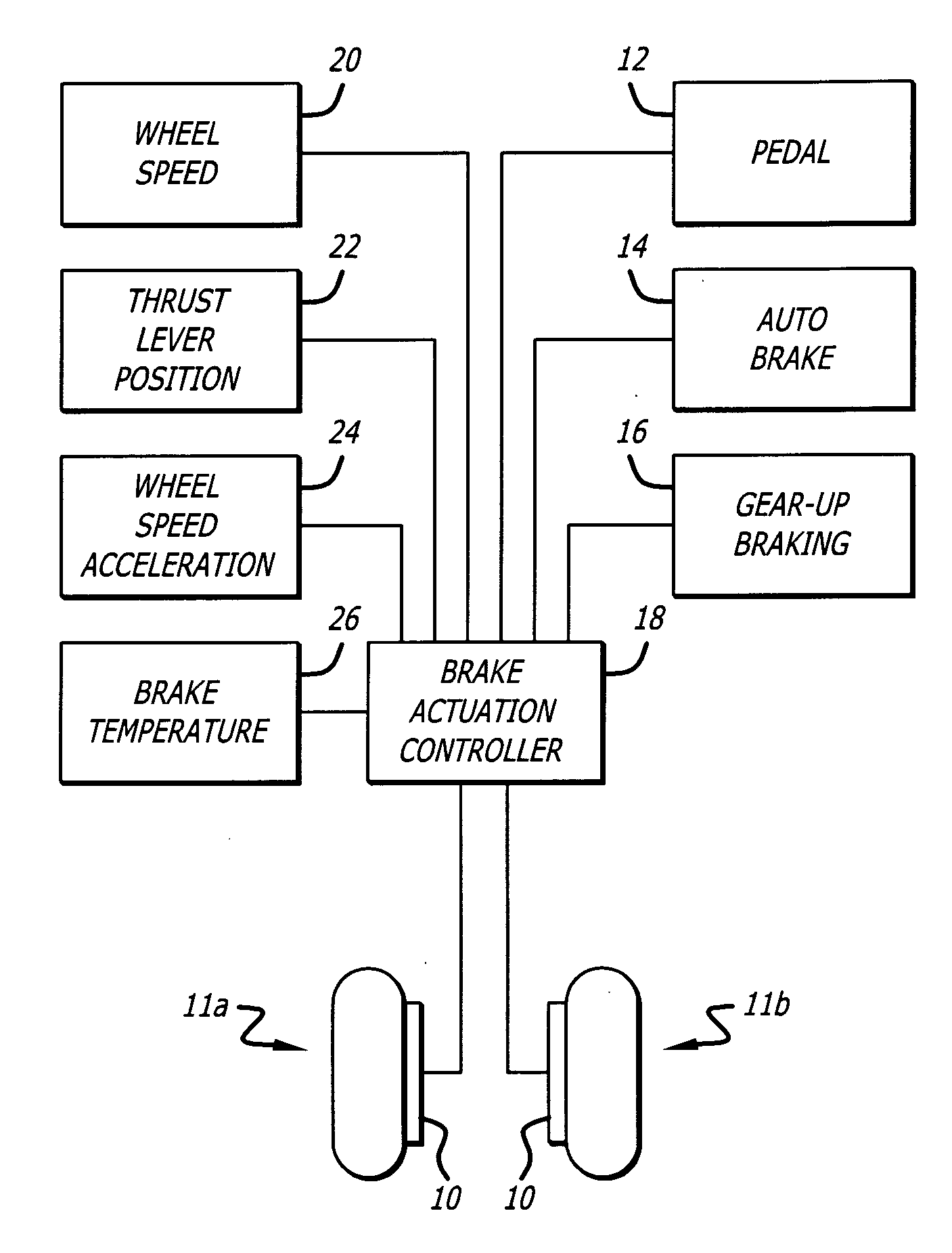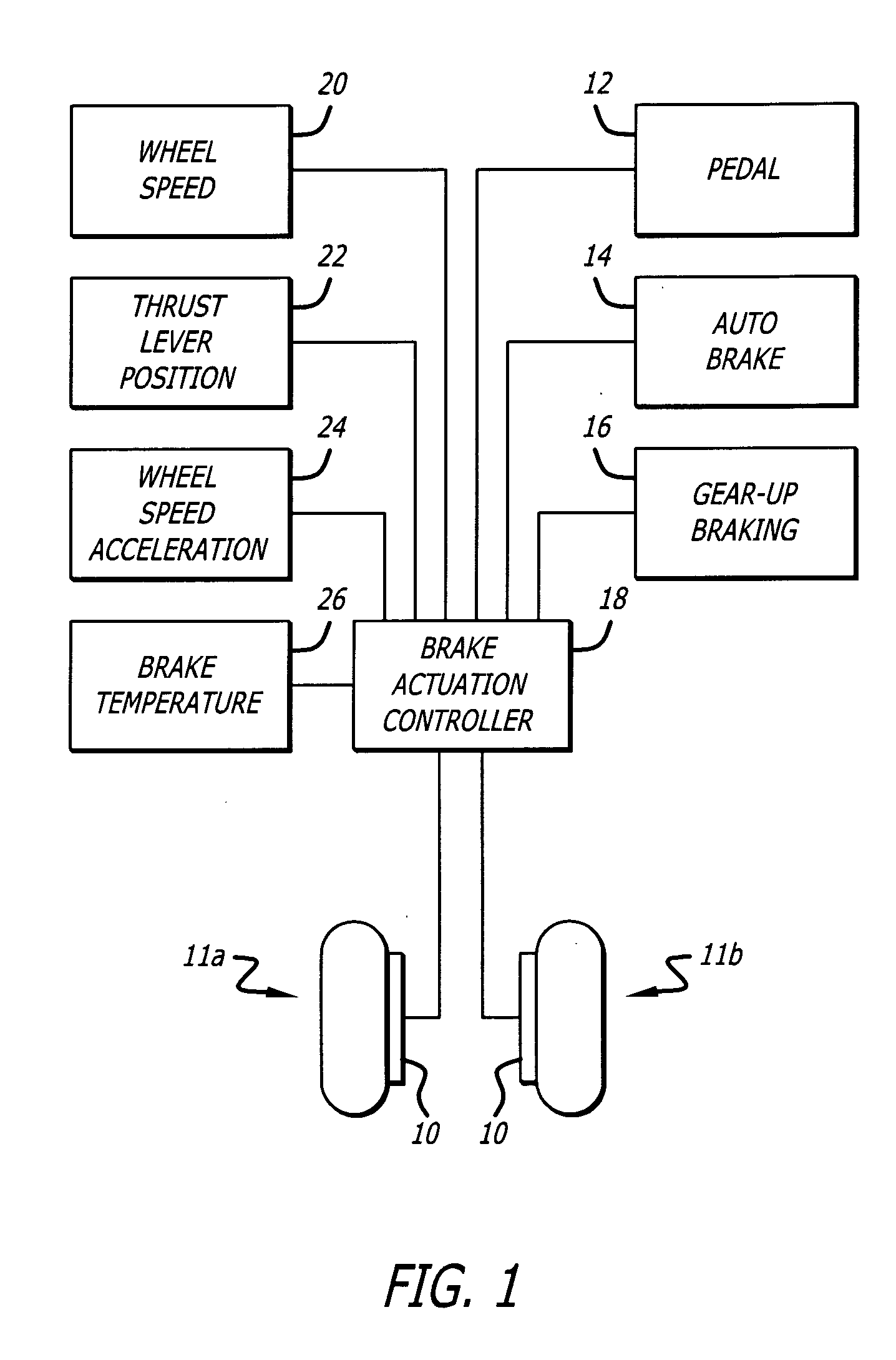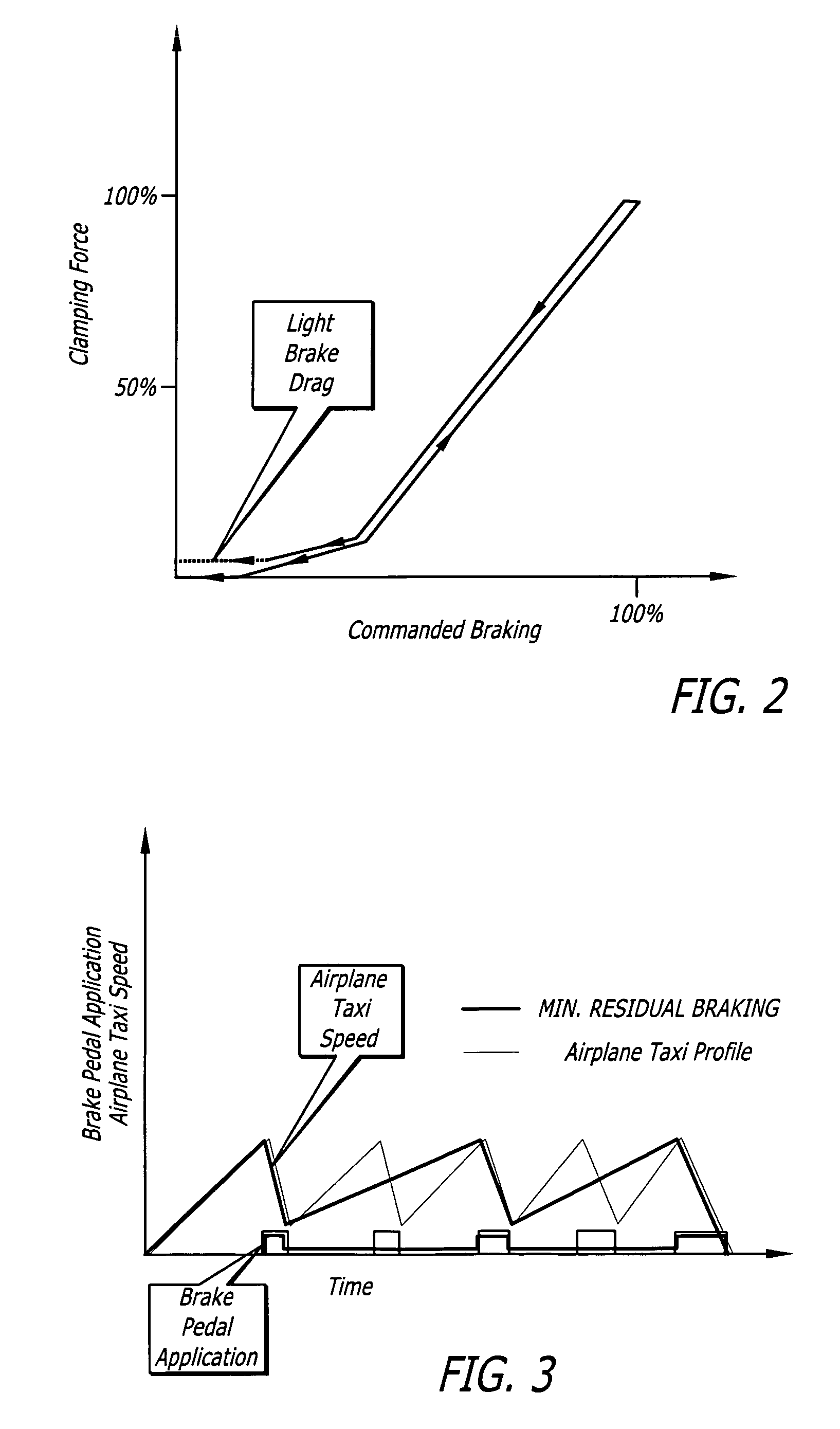Method to reduce carbon brake wear through residual brake force
a brake force and carbon technology, applied in the direction of braking systems, automatic braking sequences, aircraft braking arrangements, etc., can solve the problem of approximation as much carbon brake wear, and achieve the effect of reducing brake wear
- Summary
- Abstract
- Description
- Claims
- Application Information
AI Technical Summary
Benefits of technology
Problems solved by technology
Method used
Image
Examples
Embodiment Construction
[0019] Referring to the drawings, which are provided for purposes of illustration and by way of example, the present invention provides for a method for controlling carbon brakes of an aircraft having a plurality of wheels and a corresponding plurality of wheel brakes for the plurality of wheels to reduce brake wear when the aircraft is taxiing. The method according to the invention reduces brake wear by maintaining a residual minimum brake application clamping force after commanded braking has been initiated, as well as after the pilot has released the brake pedal following a brake application. This is done so that the number of brake applications is reduced, since the friction surfaces never leave contact with one another between pilot brake applications. When a pilot actuates a brake pedal with this minimum residual brake force enabled, normal braking will not be affected. The residual brake force is set each time after the brakes are applied, and is then removed if one or more l...
PUM
 Login to View More
Login to View More Abstract
Description
Claims
Application Information
 Login to View More
Login to View More - R&D
- Intellectual Property
- Life Sciences
- Materials
- Tech Scout
- Unparalleled Data Quality
- Higher Quality Content
- 60% Fewer Hallucinations
Browse by: Latest US Patents, China's latest patents, Technical Efficacy Thesaurus, Application Domain, Technology Topic, Popular Technical Reports.
© 2025 PatSnap. All rights reserved.Legal|Privacy policy|Modern Slavery Act Transparency Statement|Sitemap|About US| Contact US: help@patsnap.com



